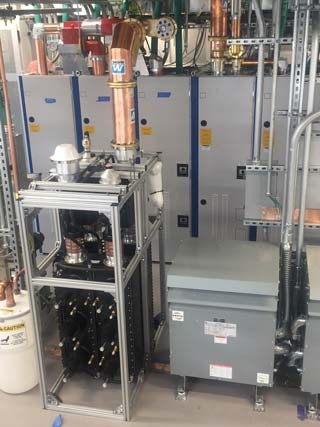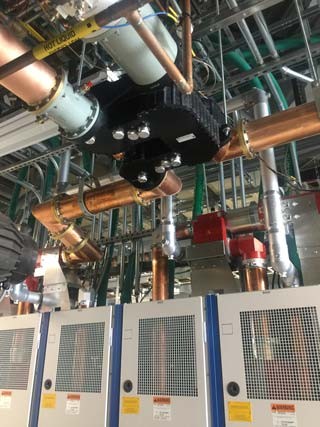Products Category
- FM Transmitter
- 0-50w 50w-1000w 2kw-10kw 10kw+
- TV Transmitter
- 0-50w 50-1kw 2kw-10kw
- FM Antenna
- TV Antenna
- Antenna Accessory
- Cable Connector Power Splitter Dummy Load
- RF Transistor
- Power Supply
- Audio Equipments
- DTV Front End Equipment
- Link System
- STL system Microwave Link system
- FM Radio
- Power Meter
- Other Products
- Special for Coronavirus
Products Tags
Fmuser Sites
- es.fmuser.net
- it.fmuser.net
- fr.fmuser.net
- de.fmuser.net
- af.fmuser.net ->Afrikaans
- sq.fmuser.net ->Albanian
- ar.fmuser.net ->Arabic
- hy.fmuser.net ->Armenian
- az.fmuser.net ->Azerbaijani
- eu.fmuser.net ->Basque
- be.fmuser.net ->Belarusian
- bg.fmuser.net ->Bulgarian
- ca.fmuser.net ->Catalan
- zh-CN.fmuser.net ->Chinese (Simplified)
- zh-TW.fmuser.net ->Chinese (Traditional)
- hr.fmuser.net ->Croatian
- cs.fmuser.net ->Czech
- da.fmuser.net ->Danish
- nl.fmuser.net ->Dutch
- et.fmuser.net ->Estonian
- tl.fmuser.net ->Filipino
- fi.fmuser.net ->Finnish
- fr.fmuser.net ->French
- gl.fmuser.net ->Galician
- ka.fmuser.net ->Georgian
- de.fmuser.net ->German
- el.fmuser.net ->Greek
- ht.fmuser.net ->Haitian Creole
- iw.fmuser.net ->Hebrew
- hi.fmuser.net ->Hindi
- hu.fmuser.net ->Hungarian
- is.fmuser.net ->Icelandic
- id.fmuser.net ->Indonesian
- ga.fmuser.net ->Irish
- it.fmuser.net ->Italian
- ja.fmuser.net ->Japanese
- ko.fmuser.net ->Korean
- lv.fmuser.net ->Latvian
- lt.fmuser.net ->Lithuanian
- mk.fmuser.net ->Macedonian
- ms.fmuser.net ->Malay
- mt.fmuser.net ->Maltese
- no.fmuser.net ->Norwegian
- fa.fmuser.net ->Persian
- pl.fmuser.net ->Polish
- pt.fmuser.net ->Portuguese
- ro.fmuser.net ->Romanian
- ru.fmuser.net ->Russian
- sr.fmuser.net ->Serbian
- sk.fmuser.net ->Slovak
- sl.fmuser.net ->Slovenian
- es.fmuser.net ->Spanish
- sw.fmuser.net ->Swahili
- sv.fmuser.net ->Swedish
- th.fmuser.net ->Thai
- tr.fmuser.net ->Turkish
- uk.fmuser.net ->Ukrainian
- ur.fmuser.net ->Urdu
- vi.fmuser.net ->Vietnamese
- cy.fmuser.net ->Welsh
- yi.fmuser.net ->Yiddish
Turning Broadcast Upgrades into a Next-general TV Advantage
The nature of broadcast is changing. From the spectrum repack in the US to huge strides being made towards the next generation of over the air transmission, broadcasters all around the globe are having to make significant investment into new infrastructure in order to support the fact that the broadcast operating environment is currently in a state of flux.
This is particularly true for those migrating to different channels as a result of spectrum reallocation, where nearly all RF equipment, from the transmitters through to the antennas, will need to be replaced in order to continue service delivery.
Each network upgrade has a cost attached, of course, but every piece of equipment in the RF chain also has the potential to add value for helping broadcasters to futureproof. So, with the need to roll out new infrastructure a given, the question now becomes how broadcasters can use this required investment outlay to their advantage, and how the latest hardware can help to increase operational efficiency for the future.
Since there are so many pieces to the broadcast puzzle, to answer this question it is helpful to work from the bottom up. Antenna sites and their associated costs are a significant headache for broadcasters. With increasing pressure to do more with less, lowering both capital expenditure cost and site footprint is a new priority. And the first avenue to achieving this is through the transmitters they choose to deploy.
High power transmitters have undergone significant changes in recent years, with solid state systems now the norm. This is a logical avenue for broadcasters to benefit from when upgrading as new units offer reduced size, increased reliability, lower maintenance, and frequency agility over outgoing hardware.

However, despite solid state architecture becoming commonplace, the advantages it offers are not always capitalised upon by broadcasters. Often, these new transmitters are paired with old technologies elsewhere in the RF system, meaning the full benefits cannot be realised. It’s not simply a performance issue either – it has a knock-on effect, which means broadcasters can fail to take advantage of the full space and future cost savings offered by newer equipment.
This consideration, and the inherent reliability of newer sold state transmitters, allows for further space saving gains elsewhere in the RF chain. When it comes to transmitter power combiners, broadcasters are now in a position to move away from the bulky switching units that have previously been essential for tube-type transmitters.
With solid state transmitters, if a single amplifier module fails it does so in “soft failure” mode, meaning the reduction in output power is barely discernable. Full power can be restored by “hot swapping” a spare amplifier module, which allows the transmitter to be repaired quickly with no downtime and without a requirement for high power switching.

Introducing efficiency throughout – mask filters
Next, we come to the mask filters as we work our way towards the tower. This is where it’s essential that broadcasters make sure the RF system connected to the transmitter has a very low loss, thus maintaining the power efficiency of the system. Again, recent technological developments can help make this a reality. For example, the latest mask filters take a unibody approach. This removes the need for connections to be soldered or bolted together, both of which increase loss and cause reduced system efficiency.
These new benefits also extend to the cooling of the mask filters. The latest designs allow for optimised thermal conductivity in key locations within the filter body, leading to a more even and consistent conduction and removal of heat. The more efficient liquid cooling methods seen in modern solid state transmitters are often extended to the mask filters, too. Together, this results in increased power handling, an uplift in reliability due to the elimination of unreliable forced air blowers, and also a reduced footprint with the potential to reduce the required site space for the mask filter by a factor of typically eleven times for a 90kW filter.
Modern UHF mask filters can deliver another critical advantage to the broadcaster – flexibility. The modern generation of 8-pole UHF mask filters, for example, are designed for operation on both ATSC and ATSC3.0 without any retuning, making them truly futureproof. Modern devices are tunable, meaning these filters do not need to be manufactured for specific installation. Units can therefore be stocked on the shelf, speeding up procurement and installation. With the help of computer-aided tuning software, units like this can also be tuned in less than an hour, giving unprecedented flexibility for broadcasters to adapt their equipment for future changes without needing to rip and replace.
Building up to the bigger picture – the Antennas
Antennas are where broadcasters face the largest number of choices when it comes to investing in new hardware and preparing for the next generation of broadcast requirements. It’s a difficult decision to make, as there is no one-size-fits-all approach – different systems will be better for different operating environments, and each have their own pros and cons.
Broadband antennas
For main antennas, some stations will use shared broadband antenna systems that take advantage of new technological advantages such as variable polarisation capabilities. The obvious initial benefit of this is lower cost of ownership as a result of the shared infrastructure. Each broadcaster can also select their own polarisation ratio in a system like this too, and change it at a later date, giving an added layer of flexibility and an avenue to optimise their resources further.
Systems that are built upon variable polarisation technology (VPT) offer broadcasters an added edge, particularly in certain regions. For example, in the US, elliptical polarisation is highly desirable for ATSC3.0 transmission as it supports enhanced delivery to portable devices. In addition, VPT antennas also provide an upgrade path to enhanced ATSC3.0 transmission modes such as MIMO and MISO, offering the opportunity to transmit additional program content, whether that’s higher resolution video or additional content streams.
For broadcasters preparing for the next-generation of TV and new transmission applications, then, selecting an antenna system that embraces VPT technology will offer the flexibility and performance they need – both now and in the future.
Pylon Antennas
Despite the benefits of broadband antennas, the single channel pylon antenna continues to be the choice for many broadcasters due to its simplicity and low wind load. Although traditionally this class of antennas has had its limitations, it has now made huge strides forward.
New design techniques and advanced RF simulation methods using advanced cloud computing have enabled complete antenna systems to be designed and tuned within the RF simulation environment. This means the manufactured product requires almost no production tuning, with the advantage of reduced lead-time and additional assurances when it comes to meeting installation project milestones.
In the past, one of two different feed network architectures were selected for a pylon antenna. The result was a trade-off between either a stable elevation radiation pattern across the channel or smooth elevation radiation patterns with good null fill characteristics. However, new techniques have since been developed that provide the best of both worlds, meaning there is no longer a trade off when using new pylon antennas.
When combined with elliptical polarisation these highly stable and smooth elevation patterns provide superior coverage that’s ideally suited to advanced systems such as ATSC3.0
Two in one benefits – interim antennas
For broadcasters undergoing a spectrum repack, there is an additional consideration when it comes to antenna technology. Most stations will require an interim antenna while their main antenna is being replaced. However, rather posing a challenge, this could be used by broadcasters as an opportunity to get ahead – selecting a system that following the repack can be used as an auxiliary antenna.
Features to look for are low wind load, easy installation for a speedy repack, and enough gain to replicate the main antenna effective radiated power (ERP) in order to reduce loss of reception during antenna works. Elliptical polarisation is an appropriate feature to look for here, too, particularly if the interim antenna will be repurposed at a later date to handle ATSC3.0 transmission.
Broadband slot antennas with elliptical polarisation therefore make an ideal option, offering low wind load and consistent radiation patterns throughout the UHF band. This type of antenna can be used across a wide range of channels giving broadcasters that much needed flexibility, particularly for post repack transmissions should the main antenna not be ready in time for the cut-over deadline.
Conclusion
Ultimately, broadcasters have a number of choices to make when it comes to getting the most out of their impending hardware investments. New technologies can deliver on this and help adapt to what’s coming on the horizon, which is all the more important in 2018 when the broadcast operating environment is in a constant state of flux. With this in mind, it’s now become essential to consider futureproofing and flexibility when making upgrade decisions, both for the purpose of tackling current challenges and in preparing for the next generation of broadcast.

